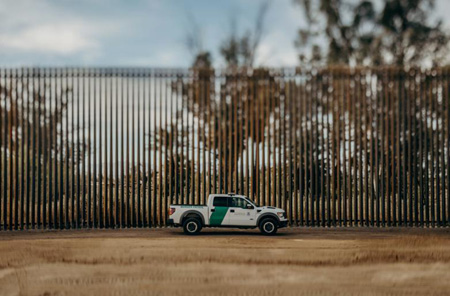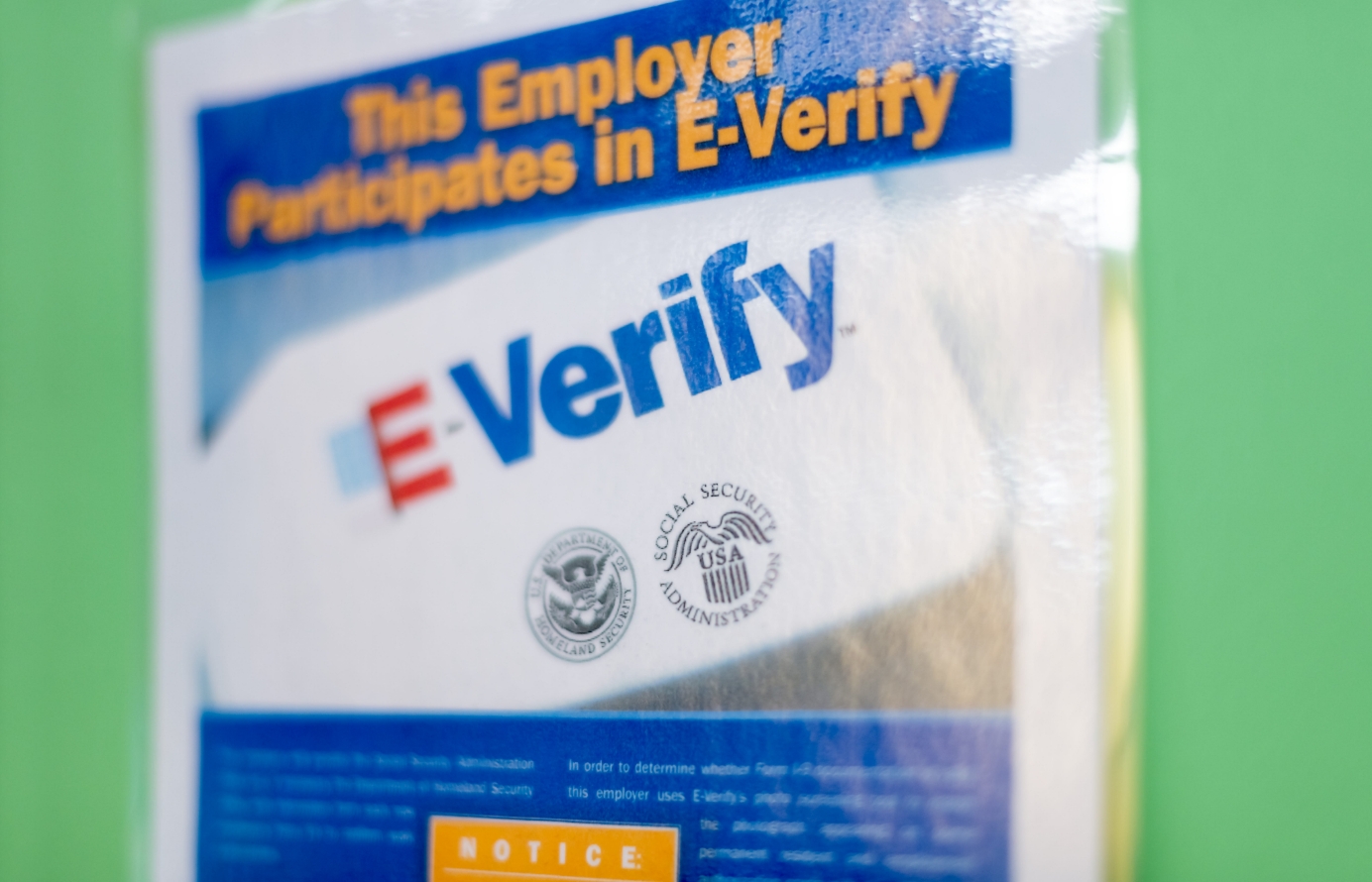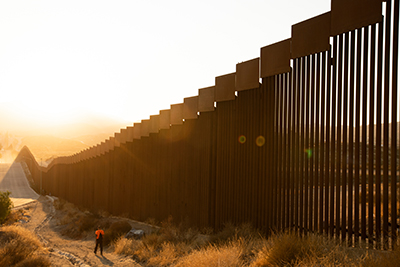Border Chaos and the Catch-22 of Immigration Reform
 The immigration system of the United States is more restrictive than most other developed countries. As my colleague David Bier has shown, the foreign‐born U.S. share of the population is the 35th highest out of 47 countries, including illegal immigrants. The United States has a foreign‐born share of the population between Spain and Estonia. Using just the legal immigrant share of the population, the United States would have the 40th highest share that is foreign‐born, between Denmark and France.
The immigration system of the United States is more restrictive than most other developed countries. As my colleague David Bier has shown, the foreign‐born U.S. share of the population is the 35th highest out of 47 countries, including illegal immigrants. The United States has a foreign‐born share of the population between Spain and Estonia. Using just the legal immigrant share of the population, the United States would have the 40th highest share that is foreign‐born, between Denmark and France.
A big difference in immigration between the United States and Europe is that illegal immigrants are about 3.1 percent of the U.S. population. In Europe, by contrast, less than 1 percent of the population are illegal immigrants. However, Europe and the United States have a similar share of the foreign‐born population who are illegal immigrants at slightly over 20 percent, if one only examines non‐EU and non‐EFTA immigrants in Europe. Immigration is a major political issue in Europe, but the illegality of immigrants is less salient because there are many fewer illegal immigrants. In the United States, policy and political disagreements over immigration are linked with the large illegal immigrant population, illegality, and the chaos from large black markets.
Most illegal immigrants who have arrived in the recent years prior to President Biden entering office likely entered lawfully and overstayed their visas. A large number also entered unlawfully and that share has likely risen since Title 42 was enacted in March 2020, which created perverse incentives to enter unlawfully. Illegal entries are the main source of chaos and the perceptions of chaos along the U.S.-Mexico border. After all, President Trump frequently employed the slogan “build the wall” in reaction to the chaos along the border – he didn’t use the slogan “reduce legal immigration.” President Trump had little success in reducing the number of illegal immigrants in the United States and cutting the number of unlawful border crossers, but he did reduce legal immigration. Still, the border chaos was the political motivation for his elevation of the immigration issue.
I’ve long written about how perceptions of chaos along the border and the lack of government control over immigration reduce political support for legal immigration. It’s natural for many people to see the chaos of millions of apprehensions of illegal immigrants along the border and to thus support more border enforcement, higher walls, and hiring more Border Patrol agents in response. We’ve pointed out that more legal immigration, even temporary guest worker visas, reduces illegal immigration by creating a legal alternative that drives some would‐be illegal border crossers into the visa system. Unfortunately, the legal visa rules remain complex and the regulatory barriers are frequently worse.
Support for liberalized legal immigration reduces when there is a perception of chaos caused by illegal immigration. This creates a policy Catch‐22 for American supporters of liberalized immigration. Chaos and illegal immigration are caused by government restrictions on legal immigration, but it is extraordinarily difficult for policymakers to support liberalization in the face of so much immigration‐related chaos. Thus, U.S. immigration restrictions produce chaos and the liberalizations required to reduce that chaos are politically difficult or impossible so long as the chaos remains.
In the 1950s, harsh immigration enforcement combined with liberalized temporary guest worker visas reduced the number of illegal immigrants by 90 percent and the number of border crossers by 97 percent in just a few years. Then‐director of the Immigration and Naturalization Service Joseph Swing described the Eisenhower Administration’s efforts as an exchange of illegal immigrants for legal migrants. He said, “If there is any employer who cannot get legal labor all he has to do is let either the Department of Labor or Immigration know and we will see that he gets it.” A Border Patrol official warned that if the guest worker visa program was ever “repealed or a restriction placed on the number of braceros [guest workers] allowed to enter the United States, we can look forward to a large increase in the number of illegal alien entrants into the United States.” That is exactly what happened when that guest worker visa was repealed and immigration chaos at the southern border has been a feature since the mid‐1960s.
A recent excellent paper by Dallas Card, Leah Boustan, and others shows that “crime” and “legality” are the most salient rhetorical frames used by policy makers when debating immigration today. “Crime” includes violent and property crimes, terrorism, and smuggling, but also violations of immigration law. Policymakers are very concerned about illegal immigration and that dominates the debate over immigration, as is shown by the recent talk of an “illegal immigrant invasion.”
A straw poll of conservatives at CPAC shows this clearly. The pollsters, knowing their audience’s concerns, lumped the border wall and immigration question together into one (6:07:49). Immigration scholars may object that border security and legal immigration are different, and they’re correct, but they are connected in people’s minds so we can’t separate those issues and convince people to support expanded legal immigration. The Catch‐22 of immigration reform is that it is politically extremely difficult to liberalize immigration in the face of so much border chaos and it is extremely difficult or impossible to radically reduce the border chaos without immigration liberalization.
Boosting immigration enforcement without increasing legal immigration may decrease the number of border crossers, but the chaos would be more salient with additional photos, videos, apprehensions, and stories about the chaos. Imagine apprehensions falling by 90 percent but there being more photos of every apprehension, for instance. Furthermore, boosting enforcement is substantially more expensive than increasing the number of visas. In the year 2018, we estimate that additional Border Patrol agents would have resulted in a taxpayer cost of $4,353 per extra apprehension from just the extra government salaries paid and not including the other costs of detaining or removing the illegal immigrant. But a 1 percent increase in additional H‑2 temporary worker visas for Mexicans decreases their number of apprehensions by slightly more than 1 percent at a taxpayers cost of zero.
A concerted immigration enforcement effort combined with a vast liberalization of temporary guest worker visas would dramatically and permanently reduce the border chaos, even to the point where the government could reduce enforcement. More enforcement isn’t necessary from a practical policy perspective, but it may be from a political perspective. At least, a big show of enforcement would be necessary. This is the assumption baked into every immigration enforcement reform effort over the last 20 years. It’s one of the possible ways to resolve the Catch‐22 of immigration reform.








